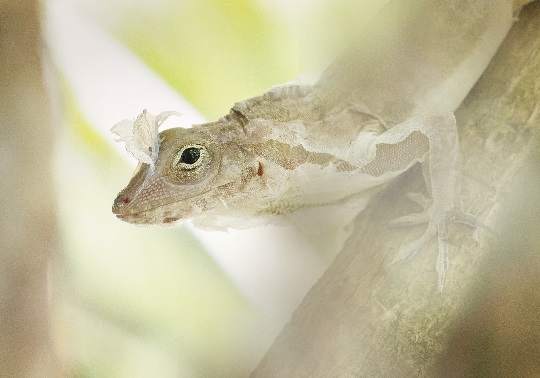
Roberto García-Roa, Ethology researcher from the Cavanilles Institute of the Biodiversity and Evolutionary Biology of the Universitat de València has been awarded in the photography contest of the British Ecology Society. The awarded work, in the ‘Up close and personal’ category, shows the exact moment in which an autochthonous reptile from Costa Rica changes its skin.
According to García-Roa, reptiles change their skin once or several times a year. “It is a delicate process, since, many species experience a certain vulnerability in the individual, that hinder their movements and preventing them from their vision.” For this reason, it is not usual to observe the development of this process in nature as it happens. "However, it is not impossible", as the ethologist points out regarding the award-winning photography.
The reptile protagonist of the snapshot is an Anolis male that, at that precise moment, sheds its skin in the branches of a grove near the coast of Cahuita, in Costa Rica. “The skin that is falling gives the reptile a strange, but fun appearance,” says the photographer and researcher.
Roberto García-Roa has won different awards in scientific photography, like the first photography prize of the British Ecological Society in 2015, and the Ecosystems and Communities prize in 2016, also from this society. Besides, one of his photographs was pre-selected in the Ecology and Environmental Science category of the Royal Society in 2016, and he has also won the April monthly competition from the BBC Wildlife Magazine about offspring in the nature.
Under the slogan Capturing the ecology, students and ecologists from around the world have taken part in this competition in order to immortalize and celebrate various reasons of ecology. The themes revolve around flora and fauna, ranging from predators capturing and devouring their prey, to artistic photographs taken in exotic forests.
The award-winning photographs will be exhibited in the annual meeting organised by the British Ecological Society in December. Around 1,500 ecologists from 60 countries attend this meeting to discuss the latest advances in ecological research.












